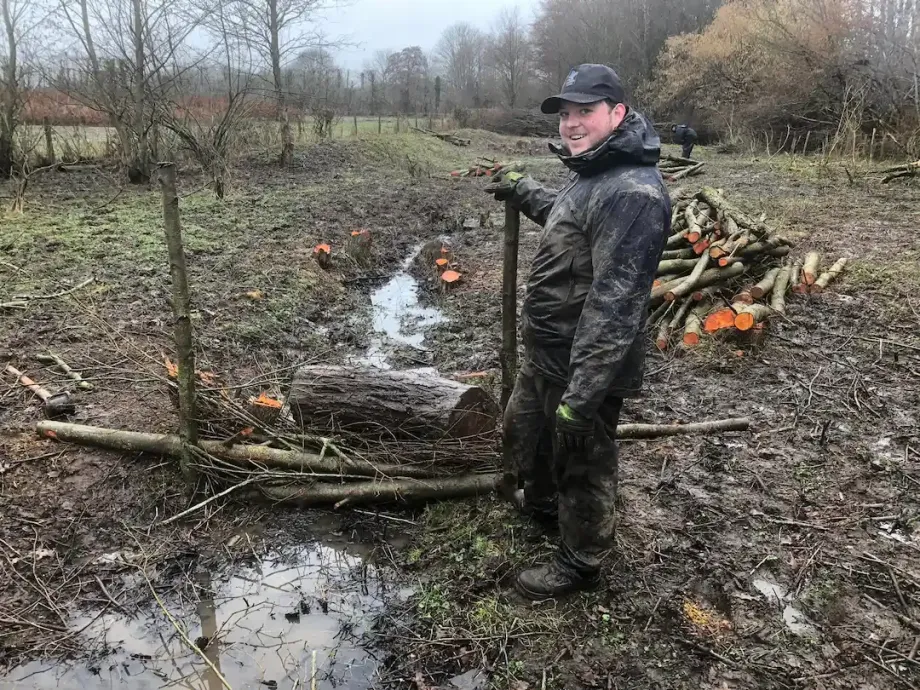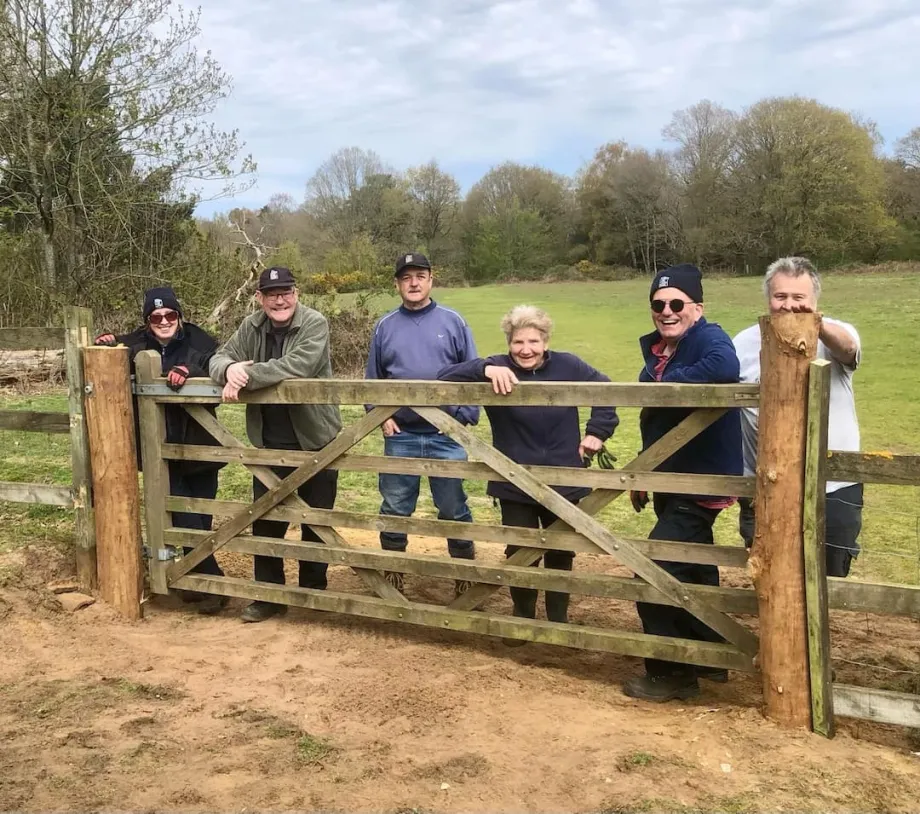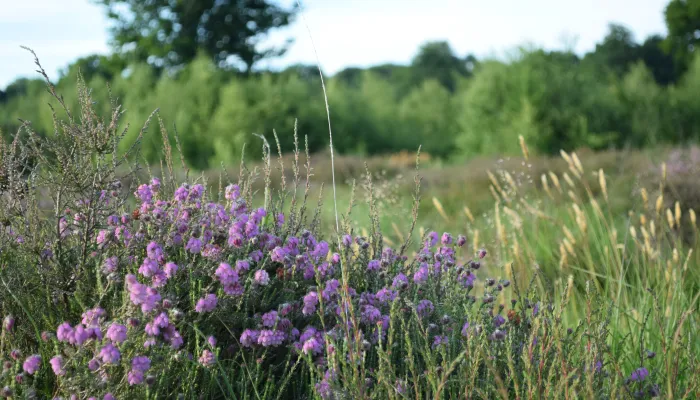
"For the Spring and Summer tasks we had slightly nicer work conditions though still some wet weather keeping the bogs on Hothfield Heathlands topped up all summer. We had some massive work parties on there and at Conningbrook Lakes Country Park, meaning we could clear huge amounts of the ever-present bracken at Hothfield, and the invasive plant Himalayan Balsam at Conningbrook. Balsam seems to grow best entwined amongst nettles and I think I’m only just starting to stop tingling from it. (Himalayan Balsam, Impatiens glandulifera, was introduced in the UK in 1839 and is an invasive weed of riverbanks and ditches, where it prevents native species from growing. MT.)
The blooms of heather we had this year were spectacular and the orchids were abundant. The boundaries of Hothfield bog which were mechanically cleared contractors were particular hotspots, demonstrating how quickly things recover and the importance of management.
"In the Autumn it was time to rev up the chainsaws and brush cutters for clearance work. At Conningbrook the tasks were reed cutting and coppicing. The power tool operators had a head start but are quickly being caught up by the clearance team! At another Ashford reserve, Stone Wood, we combined coppicing, opening up sunny woodland paths and working in the leaky dam area, also known as “Dinosaur park”. Although we did not see any T. rex, it does look like a throwback to a time when beavers were roaming the area, with dams holding back the torrential rain from the previous day creating a set of slow draining ponds.
After a soggy winter the rain gods decided to take pity on us, giving us a dry day for our annual winter celebration, we even managed to cook the sausages!
My highlights have been seeing lots of amazing work achieved throughout the year and seeing the impact this is already having on our reserves as well as the potential going forward.
"The work we have achieved is impressive and I am always honoured to be part of such a great team. I am excited for what the next year will bring.“ - Will Glasson, Ashford Area Warden.

Will and the volunteers were back on the reserve on 7 January experimenting with an improved method for tree popping (removing large saplings including roots to stop birch and willow in particular to regrow) has proved a game-changer. Using a winch on the Kent Wildlife Trust Land-Rover, in a short winter day two people pulled out over 100 trees, some 10cm+ in diameter. A shout-out to Geoff whose job was to connect the cable to the trees.
The Kent Wildlife Trust Ashford Volunteer team are out every Tuesday and Thursday, and the second Sunday of the month. New people are always welcome, and further details can be found on our website.

